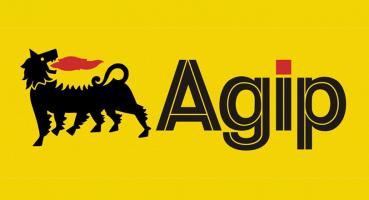Enrico Mattei's ENI (1953 - 1962)
“Eni has the task of promoting and implementing initiatives of national interest in the hydrocarbon sector "; the new body, of which Mattei was the creator, the leader undisputed and the first president, was then created with the purpose of ensuring to Italy an autonomous energy policy.
Eni was a complex structure, which represents a major innovation in the entrepreneurial scenario of the time. The scheme of Eni's companies at the time of its foundation was strictly linked to the development of a large "integrated" oil group: the four 6 sector leaders were: Agip, Agip Mineraria, Snam and Anic.
In fact, oil exploration required, following the example of large companies international, the construction of an integrated system, capable of managing all phases of oil, from the extraction to the distribution of refined products. And the activities of the four of Eni's leading companies were closely integrated with each other: Agip mining had the task of researching the raw material, Agip di market it, Snam to transport it and Anic to transform it.
Eni's objective in the Matteo period was identified in achieving energy autonomy: the basis of his strategy certainly had to be identified with mining research, a sector in which Agip mining operated. Agip mining was assigned the task of exercising Eni's exclusive rights on about 5.5 million hectares of the Po Valley and in all the remaining areas of Italy not yet occupied by private companies.
In the period 1953-1962 Agip mining drilled over a thousand research wells. In exclusive area numerous deposits were discovered, almost all of them gases; in the rest some gas and oil fields were discovered in the area.
In recent years, Eni produced 3.2 billion tons of crude oil and gasoline in Italy, and 47 billion cubic meters of natural gas. Such figures show it as the only true one source of energy that Italy could dispose of was methane. And this alone does not it could have solved national energy problems and oil shortages available. Mattei, who therefore began to be labeled as an oilman without oil, he knew it was the lack of crude oil that was the weak point of the Eni. It soon became clear that Eni could not achieve its goals by limiting its activities to the national territory and to natural gas only. The real situation showed a rather disturbing oil requirement, which the small product of Cortemaggiore could not make up for it at all. Domestic crude oil production represented a minimal share of availability total energy, 0.05% in 1950 and 1.7% in 1956. This in the face of growth exponential demand for petroleum products (between 1953, year of creation Eni, and 1959, the consumption of petrol and diesel - products intended for transport private and rail - and fuel oil - product used in thermoelectric power plants - increased dramatically, respectively by 94.5 and 98.5 and 128%). The new state body, of course, could only look beyond the borders national.
The international scenario saw a world economy in continuous expansion, with increasing levels of industrialization and consumption, in which the demand for energy, which doubled between the late thirties and the late fifties, was covered by resorting to the massive use of oil. Between 1920 and 1960 the world demand for oil increased eightfold, and nearly so all of this increase in oil consumption occurred within the world advanced industrialized, where however the energy resources were not present at all in sufficient quantity to cover such an expansion. Faced with such a high dependence on imports for their needs energy, for the industrialized countries the only source of supply was represented by the production of developing countries. As early as the mid-1950s, the Middle East alone held 67% of all known reserves of the planet; while the United States had 15.5%, production insufficient for its energy needs; Soviet oil also came consumed locally, while Western Europe only produced it 0,7%.
The excessive dependence on one resource, crude oil, was evident; and in this context it was inevitable that the largest importer of crude oil, Western Europe, and the largest holder, the Middle East, were destined to meet. The entry of the newborn Eni into the world oil industry was not easy: it was extremely difficult for a new company to reach the "promised land" and establish itself on the international market. This in fact was characterized by a monopoly situation on the part of the "seven sisters": five big companies American and two British oil (one with a Dutch stake) which gives sole held almost all of the production and world trade of 9 oil.
The events that led seven oil companies to control the fields Middle Eastern crude oil began in 1901. The British were the first to systematically exploit the oil resources of the Persia, with the agreement of the Shah, and to create, in 1909, the first company Anglo-Persian, which later became British petroleum. Follow up in the enterprise from Germany, which first exploited the Turkish fields and created the Turkish company petroleum, and that the oil of Persia and the Empire was shared with the United Kingdom Ottoman until the First World War. After the First World War, France took over from Germany in the partition of Middle Eastern deposits.
Subsequently, in the early 1920s, the first oil companies entered Americans, who tried to undermine the Anglo-French duopoly that was taking place outlining, and to take possession of the new deposits discovered in the dismembered empire Ottoman, particularly in Mesopotamia. In 1928 France, the United Kingdom and the United States United reached an agreement and joined the Iraq petroleum company: in the Middle East every other oil activity would have been carried out by mutual agreement (agreement of the "red line"), a pact that remained almost unchanged until the Second World War world, which definitively broke the balance. Meanwhile, some American companies excluded from the red line agreement acted autonomously in the Arabian Peninsula, where oil was found in large quantities in 1938.
After the Second World War the United States, which had consolidated in the role of superpower in the international arena, they took control of the oil of the Middle East: the Arabian American Company (Aramco) is born, formata da sole US companies. And the recognition of oil as a tool was clear essential to the development of an economic and political system, capitalism, engaged in a tough confrontation against the antagonist block for supremacy a world level.
By restarting Middle Eastern oil production in the early 1950s, yes notes that, based on the nationality of the companies, 58% of crude oil was extracted from US companies, 30% from British, 6.4% from French, 4'4% from Dutch through the share owned by Royal Dutch Shell. This was the dispute in which Italy and Mattei's Eni faced, consequently security of supply could take place in two ways: - accept the rules of the game imposed by the seven sisters and buy on market the available crude oil; - break with the monopoly cartel and take some initiative autonomous, risking to get into conflict with large multinationals.
Mattei chose the second path, to avoid Eni taking a subordinate position e marginal in the oil sector, and with the broader objective of guaranteeing Italy self-sufficiency in oil supplies without the need to resort to brokerage of large foreign companies. In order to carry out its energy policy, Eni had to seek oil from the minor possible price, turning to independent producers who could offer conditions more favorable than those practiced by large private companies. Mining research also had to be started abroad, where the Somali mining (company controlled by Agip, which worked in the African state until to 1964, but without success). To break the cartel with the multinationals and obtain oil concessions in the producing countries, Mattei had to offer something different from the current system (called 50%, because it shared the profits in half between the granting country and the company petroleum), and overturn the pattern of relations by proposing a new one, which corresponded to the anti-colonialism deeply rooted in the same culture of Mattei.
Mattei offered granting governments the possibility of associating directly with Eni, thus becoming a direct participant in the profits of a common mining industry. With this new formula, Eni was taking on the initial risk of research. If Eni found enough oil, the granting country would become a partner e he had to share the costs of developing the field and the plant; in return he became co-owners of half the oil and gas produced. Thanks to this formula, Agip mining was able to bring research activity in the Middle East and Africa, creating new companies: - In Egypt, from 1955, it took on an equal shareholding in the Ieoc company (International Egyptian Oil & Co.): in Egyptian territory they were brought to light numerous oil facilities and crude oil production increased rapidly, from 75,000 tons in 1955 to 3.3 million in 1962.
- In Iran in 1957 a joint venture was established between Agip mining and the Iranian company: Sirip (Irano-Italian Petroleum Company) was born. At the Sirip were granted numerous research permits, which allowed for start a decent production of crude oil from 1961. - Somip (Moroccan-Italian Society) was established in Morocco in 1958 oil), again on an equal basis between Eni and the Moroccan state; but unfortunately the explored wells turned out to be sterile. - In Libya, Agip mining operated through Cori, a company managed by Eni, which had obtained a research grant in Cyrenaica, where only in 1962 was found oil.
- In Africa, Agip mining operated in Sudan, where in 1959 it operated some searches that proved unsuccessful, in Tunisia and Nigeria.
In addition to looking for oil on its own, to overcome the monopoly of the said ones sisters, Eni tried to buy crude oil from other producers: with this in mind, yes inserts the agreement concluded with the USSR in 1961, with which a Soviet crude oil import contract. This contract, which it represented the possibility for Eni to purchase millions of tons of crude oil at a significantly lower price than that imposed by the multinationals, was part of a series of trade agreements between Italy and the USSR, which provided for the supply of Italian processed goods as a counterpart and therefore an outlet for certain products leaving chemical plants, Eni's mechanics and textiles.
Some companies dealt with the refining of crude oil: the first were the Irom and Romsa, controlled by Agip. In addition to these companies there were those with capital from Anic: Stamic and Sarn, and Stoi from Agip mining. Between 1957 and 1962, for a desire to rationalize and to eliminate the plants obsolete (the Romsa dates back to 1922), the refining companies were reduced to two: Stanic and Irom.
In the decade 1953 - 62 the refinery plants were expanded and modernized, to exceed the global capacity of eight million tons. Eni's refining capacity, although it grew in the Matteo period, it remained much lower than the private one which in 1962 was 56 million tons (Italy had therefore earned the nickname of the refinery of Europe). Even abroad, Eni began a rather prolific refining activity, using the same strategy of creating jointly owned companies with i local governments: thus refining plants were built in Morocco, Tunisia, Congo. Along with the development of refining, the commercial structure also grew of the Eni. The expansion of product sales was based on three factors fundamentals:
The improvement of the quality of the products. Eni invested heavily in search for quality, especially through the creation of the laboratory center of scientific and technical studies of San Donato Milanese, which in 1959 became the Laboratori Riuniti Studies and Research, whose purpose is the completion of research in the field of physics and chemistry with regard to the sector of hydrocarbons (the research effort gave excellent results, and in 1955 the Supercortemaggiore was considered the best European petrol).
- The reduction of prices: Agip reduced the price of gas several times, of the petrol and diesel, bringing them to the lowest levels in Europe. The moderate prices of fuel, it is no coincidence that they coincide with the boom of the industry automotive, which recorded large increases in sales.
- An intense advertising campaign aimed at highlighting the quality of products and services, directed through well-known slogans (such as "Supercortemaggiore: the powerful Italian gasoline") and through a dense network of service stations connected to Agip restaurants and motels.
These three important factors were successful in Italy (Agip had only 13% of the plants, but distributed a quarter of the petrol sold in Italy) and was replicated abroad, creating special companies for the diffusion of Agip products in foreign countries.
The constitution of Sisi (Development of Road Initiatives) fits into this perspective Italiane), a company established in 1953 between Agip, Fiat, Pirelli and Italcementi, with the aiming to improve the country's motorway network; Sisi was liquidated some a year later, following the free transfer to the State of the motorway project of Sunshine from Milan to Bologna. As far as transport is concerned, Snam was the leading company, which hired function of "joint" of the Eni group managing all its transport by road, on the tank fleet and aircraft, playing a very important role in growth Eni, and also in the economic development of Italy (Snam is in fact owed the construction of the modern pipeline network). He was in charge of the chemical sector instead Anic, consistent with the integrated group structure.
Always by virtue of the idea of a large integrated oil group it ranks the acquisition, in 1954, of the Pignone di Firenze. This company had been put in liquidation due to severe financial difficulties; to avoid a chain of layoffs the mayor of Florence, La Pira, put pressure on Mattei for Eni saved the company from bankruptcy. The capabilities of the Pignone were then exploited and placed at the service of the mechanical needs of the Eni group with the name of Nuovo Pinion. Eni, driven by Mattei's awareness of the scarcity of oil resources in the long term, entered the nuclear energy sector with the creation, in 1956, by Agip Nuclear.
The entry into this sector is part of a vast design, based on which Eni would have been involved in the development of all energy sources, in such a way as to being able to plan the achievement of energy autonomy for Italy, true goal that Mattei has always supported. The Eni leader wanted to create a balance between the energy produced in the country (electricity, methane plus energy atomic), and what had to be imported (oil). But the project ran up against the power of the opposing electric monopolies the nationalization of the electricity industry and the creation of a public body unique for the energies of all kinds, which was discussed in Parliament (despite the failure of the idea of a large public body for energy, Mattei brought forward the nuclear project and a power plant was built in Latina).
To complete the picture of the Eni group, Sofid, a company created in 1956 to coordinate the financial resources of the group companies. Furthermore, Eni he had his own newspaper, the daily “Il Giorno”, to which the image and the communication of the group and with which a vigorous defense of the company is proposed public, of the person who represents her and her political line.




























